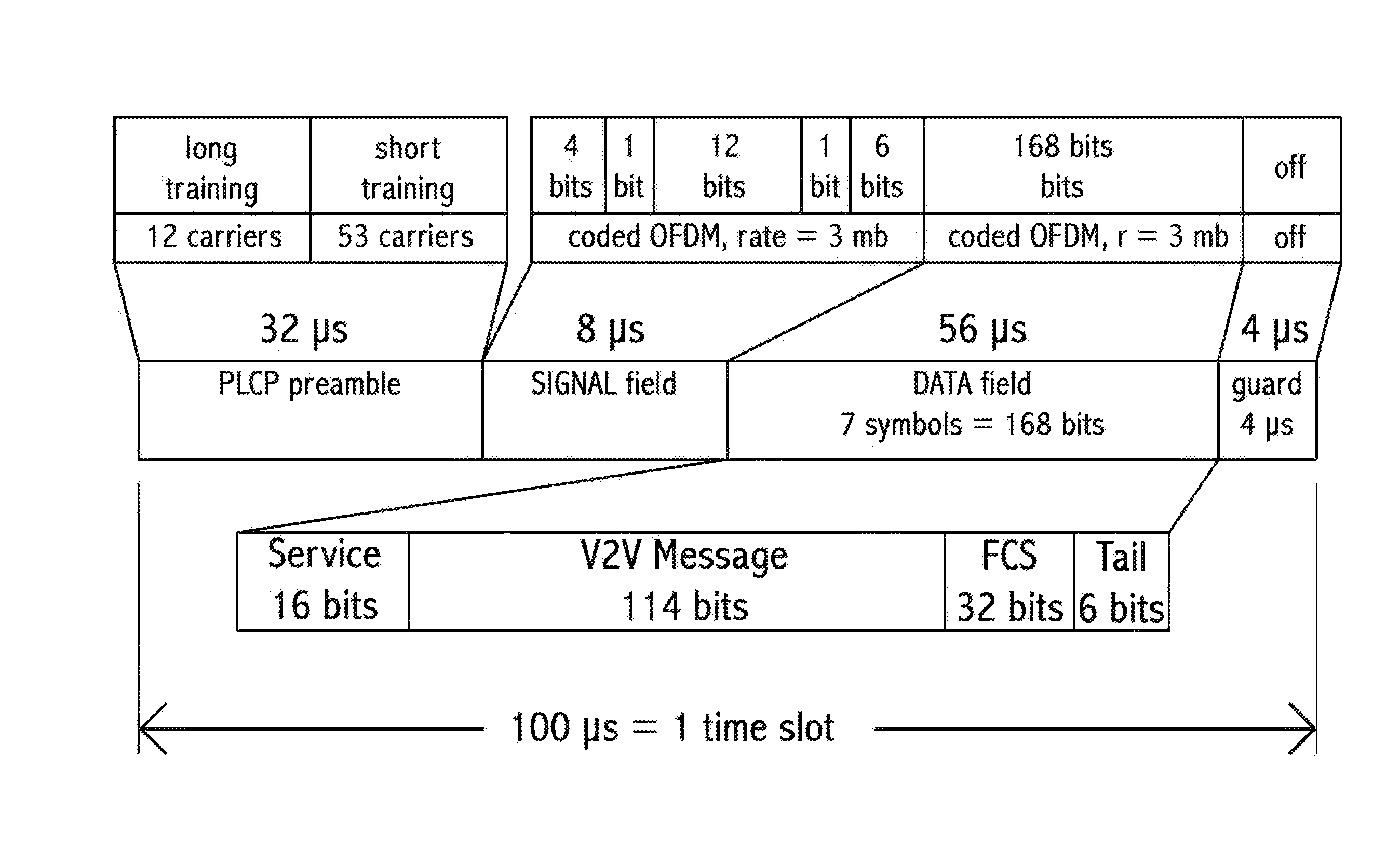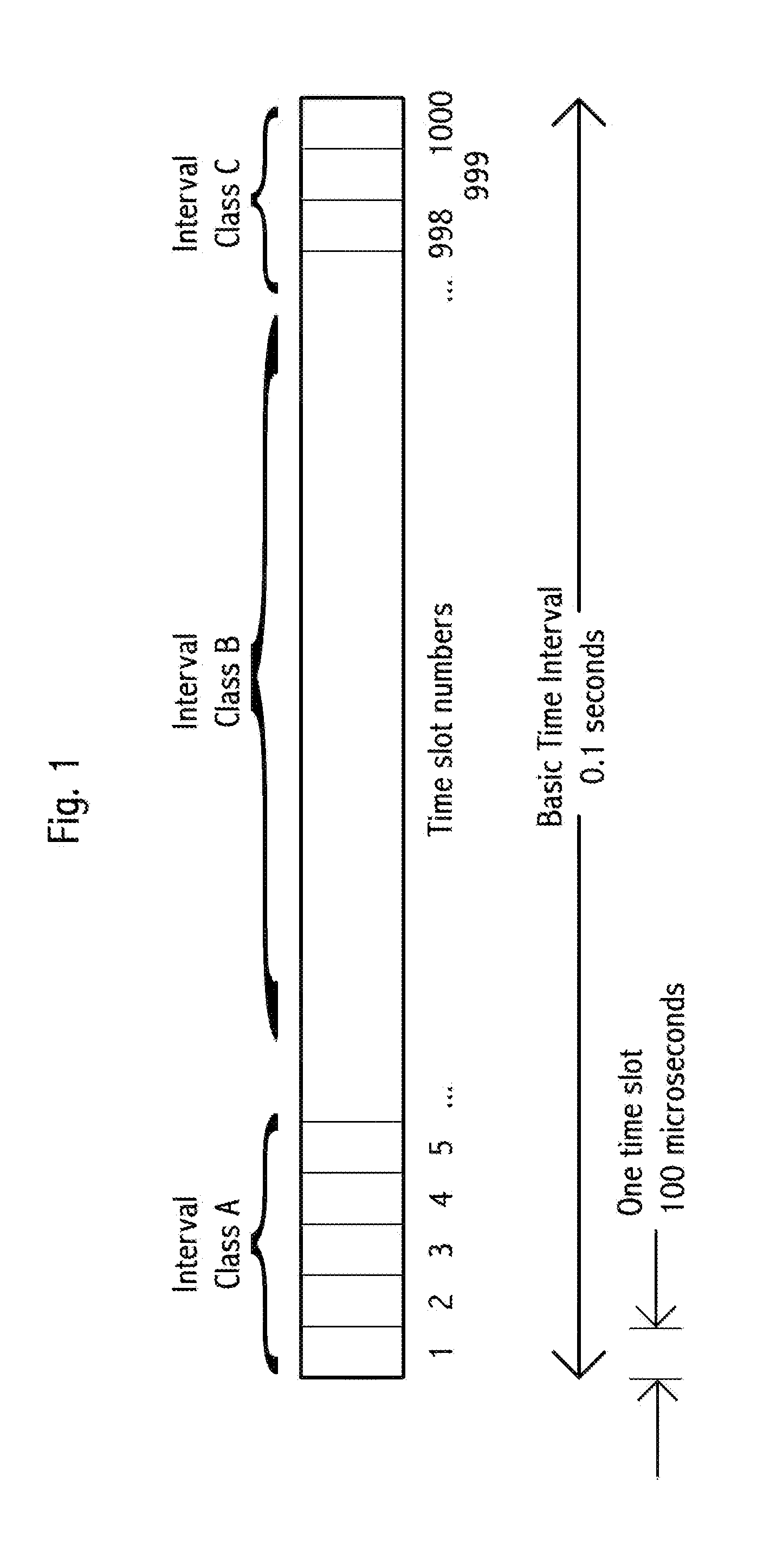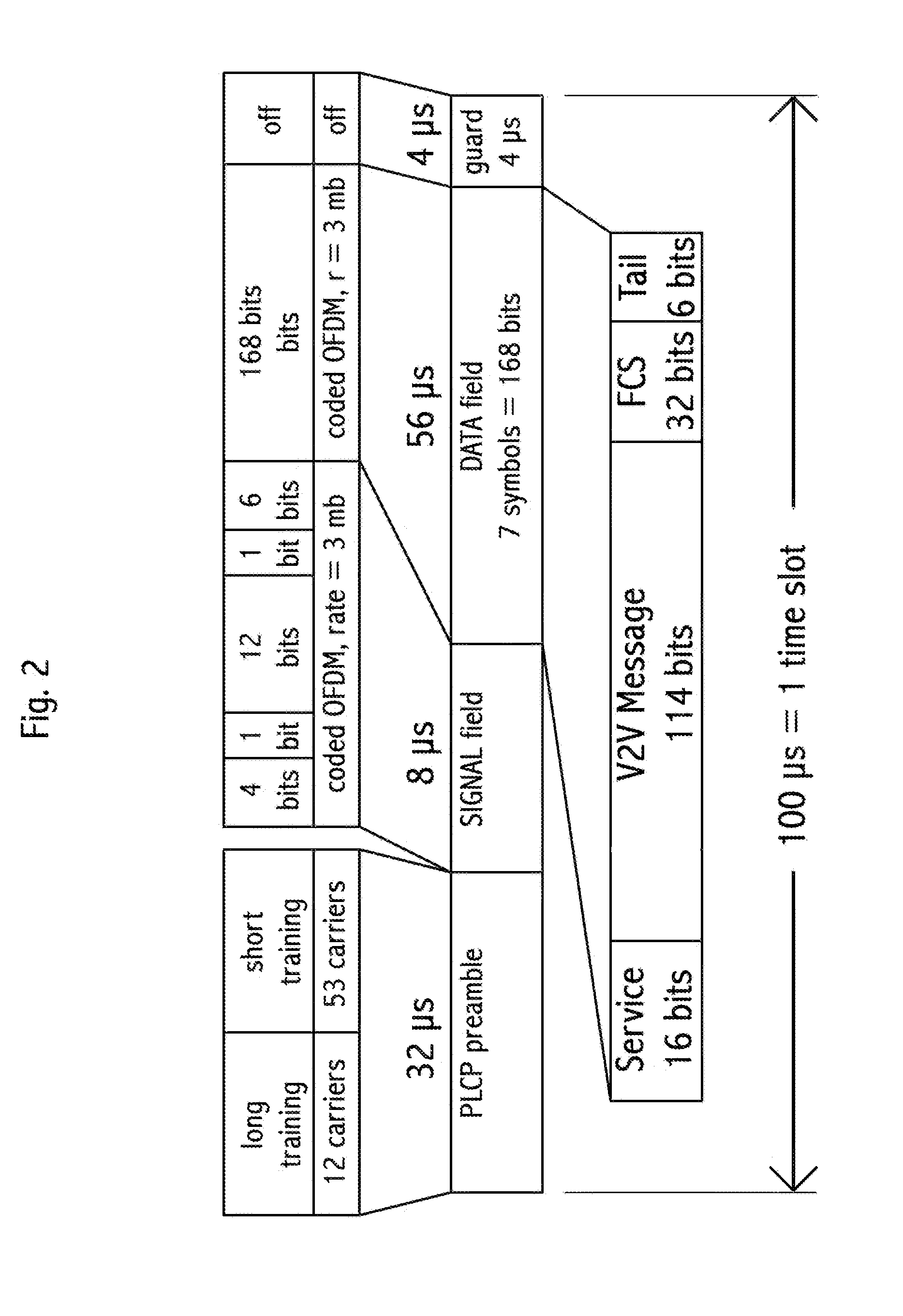Optimization method in a vehicle-to-vehicle communication system
a vehicle-to-vehicle communication and optimization method technology, applied in the direction of synchronisation arrangement, broadcast service distribution, instruments, etc., can solve the problems of system not being widely used, widespread use not being implemented or planned, and vehicle accident cost in the us is approximately $300 billion per year. , to achieve the effect of efficient encoding of vehicle size and weigh
- Summary
- Abstract
- Description
- Claims
- Application Information
AI Technical Summary
Benefits of technology
Problems solved by technology
Method used
Image
Examples
Embodiment Construction
[0119]
Table of ContentsConcept and Definitions16Proxying20Physical Layer27Interval Classes48Choosing a New Timeslot35Interval Class B Message Timing43Vehicle Identification48Location and Velocity Coding50Power Management50Passive Reflectors58Timeslots & Network Bandwidth60Message Collision Notification61Message Classes66Message Formats66Message Types83Risk Determination91Location History97Timeslot Assignment and Message Collisions103Position Determination104Lane Maps111Vehicle Elevation122Forwarding124Hacking and Security129Recording and Encryption131Predictive Vehicle Movement139Vehicles Optimized to Learned Signal Timing141Parking, Courtesy Messages and Gateways142Broadcast versus Point-to-Point146Time Base and Timestamps146XML Enhancements149Number of Occupants150Location Beacons and Targets151License Plate Recognition and Capture155Visual Enhancements156Vehicle Spacing156Timeslot Skipping157Ticketing157Vehicle Traffic Information158Interface with WiFi and Cellular159Opportunitie...
PUM
 Login to View More
Login to View More Abstract
Description
Claims
Application Information
 Login to View More
Login to View More - R&D
- Intellectual Property
- Life Sciences
- Materials
- Tech Scout
- Unparalleled Data Quality
- Higher Quality Content
- 60% Fewer Hallucinations
Browse by: Latest US Patents, China's latest patents, Technical Efficacy Thesaurus, Application Domain, Technology Topic, Popular Technical Reports.
© 2025 PatSnap. All rights reserved.Legal|Privacy policy|Modern Slavery Act Transparency Statement|Sitemap|About US| Contact US: help@patsnap.com



